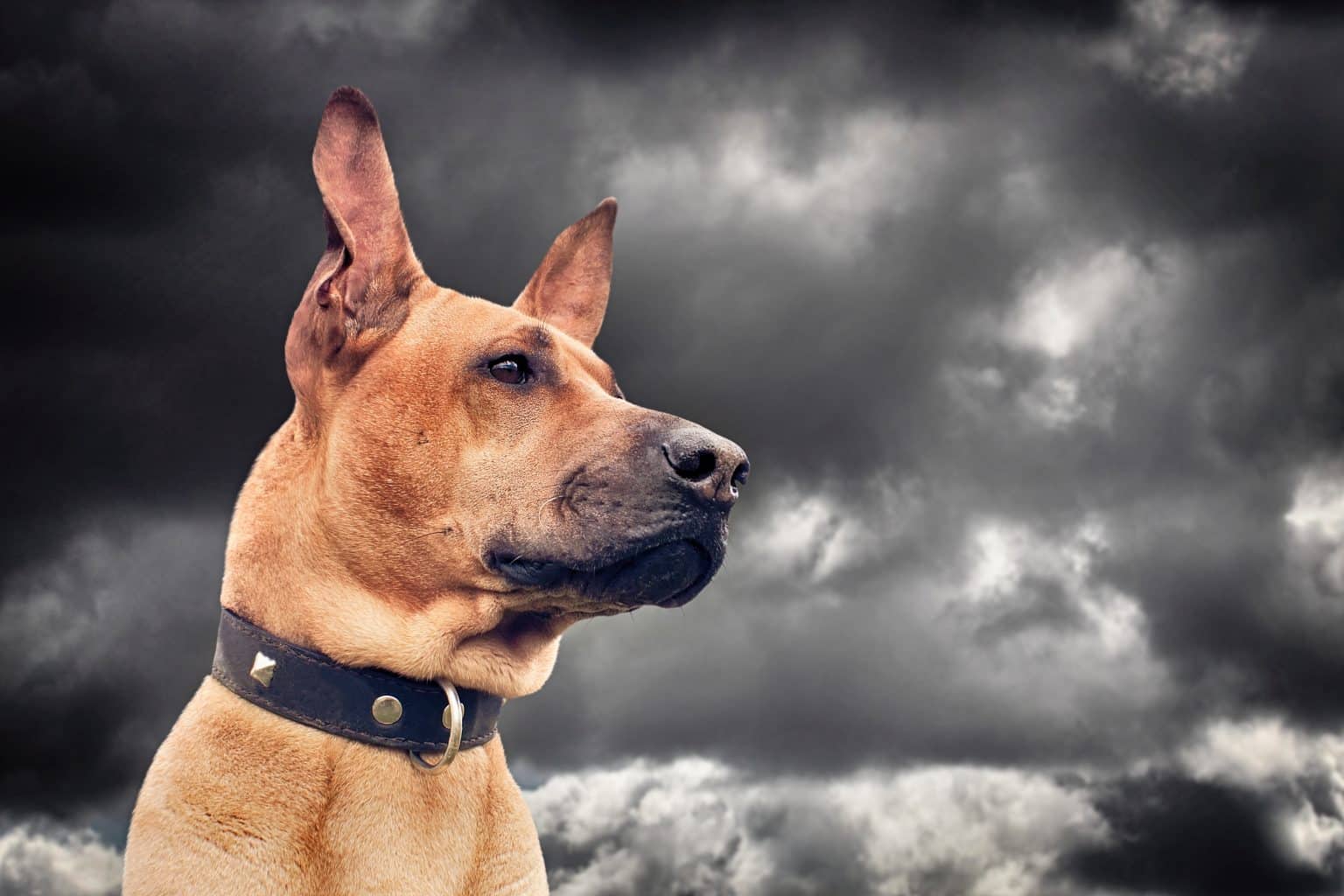As the UK braces for adverse weather conditions this week, including heavy rain and thunderstorms, dog owners are being advised on how to keep their pets calm during these unsettling times.
The Met Office issued a yellow weather warning yesterday, forecasting widespread severe weather towards the end of the week. This brings heightened concern for pet owners, particularly those with dogs who may suffer from thunderstorm anxiety. As storms approach, it’s crucial for dog parents to take proactive steps to ensure their pets’ comfort and safety.
Understanding Thunderstorm Anxiety in Dogs
Carolyn Menteith, a behaviorist and dog trainer at tails.com, explains that many dogs experience fear and anxiety during thunderstorms. “A lot of dogs are afraid of loud noises, especially unpredictable ones such as thunder or fireworks,” she says. “This fear can cause significant stress and anxiety, and as an owner, it can be distressing to see your pet suffer.”
Dogs that have not been exposed to loud noises in a controlled manner during their formative puppyhood are more likely to develop noise phobia. Unlike humans, dogs do not understand that thunder is harmless. They perceive it as loud, sudden, and frightening. Additionally, dogs are highly sensitive to changes in atmospheric pressure, which can cause them to sense a storm coming before it even begins.
Signs of Thunderstorm Anxiety
Dogs exhibiting anxiety during thunderstorms may show a range of symptoms, including:
- Seeking a secure hiding spot, such as under furniture or in a corner
- Shaking, trembling, or panting
- Barking or whining
- Pacing around the house
- Excessive drooling
- Clinginess or seeking comfort from their owner
Practical Tips to Calm Your Dog
- Exercise Before the Storm: If you anticipate a storm, try to walk your dog earlier in the day. Physical activity can help expend excess energy and may make them more likely to relax or sleep through the storm. Ensuring they have an opportunity to relieve themselves before the weather turns is also crucial to avoid additional stress.
- Create a Safe Space: Designate a secure area for your dog to retreat to during storms. This could be a crate covered with a blanket, a spot under furniture, or another comforting area equipped with their favourite toys, treats, and a bowl of water. The space should be easily accessible and close to you for reassurance.
- Offer Reassurance: Your dog will look to you for comfort during a storm. Remain calm and provide as much or as little physical contact as your dog needs. Distractions such as games or food-dispensing toys can help but be mindful that highly stressed dogs may refuse to eat.
- Mask the Noise: To mitigate the intensity of thunder, try turning on the TV or radio. Engaging in normal activities and maintaining a lively environment can help mask the sound of the storm.
- Close Curtains: Block out lightning flashes by closing curtains or blinds. This helps reduce additional visual stimuli that may further unsettle your dog.
- Consult Your Vet: For dogs with severe or worsening thunderstorm anxiety, consult your vet. They may recommend medications or complementary therapies to manage extreme cases.
- Seek Professional Help: Noise phobia is a persistent issue that benefits from professional intervention. Consulting an accredited behaviorist can help address your dog’s anxiety and make future storms less distressing.
For more tips and advice on managing your dog’s anxiety, visit tails.com.

